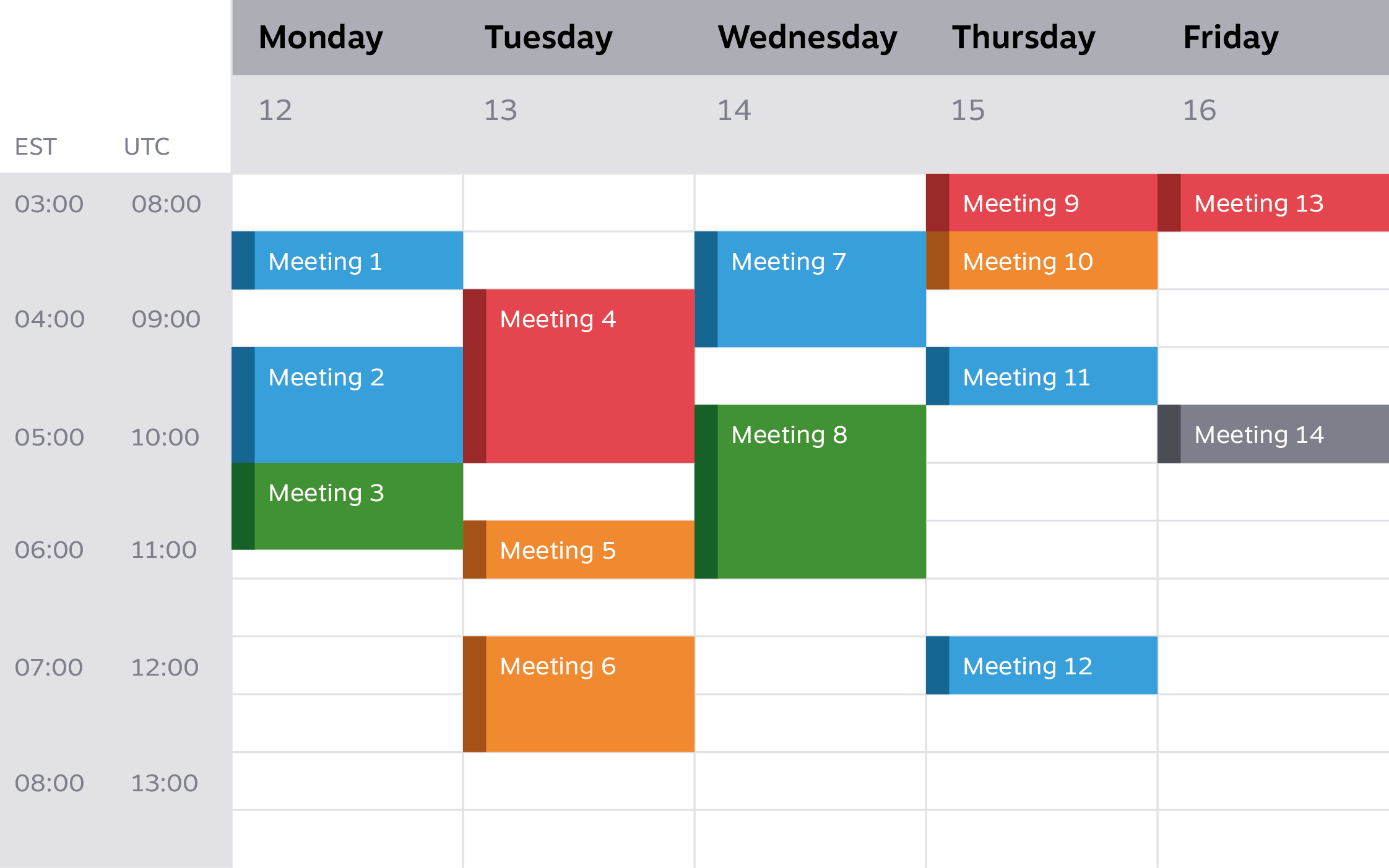Now that we’ve discussed meeting design, it’s a good time to take a look at your calendar.
By evaluating both the meetings that you’ve organized, and those you’ve been invited to, helps to create a baseline of the current state of meeting design – your own, and that of others!
It works best to look back at meetings you’ve already led or taken part in, and to look forward to those that are yet to come. This allows you to assess, retrospectively, the levels of design that were apparent in the historic meetings and consider where improvements might be made in the meetings of the future.
Here’s how it works.
- Create 5 color-coded categories, as show in the diagram below.
- Review a 3-month window comprising: past month, current month, and future month.
- Assess the meetings for their design attributes, as shown in the diagram below.
- Where you are the leader, you’ll color code those meetings which you feel you’ve designed well (blue), and those that aren’t so good (grey).
- Apply the same technique to meetings that you have been invited to, over the same period. If you feel the meeting is sufficiently well-designed, color code it green. If it has some, but not all, of the required design attributes, code it amber. If it is ‘undesigned’, color it red.

You should end up with a calendar that looks something like this.

Examine Your Meetings as Leader
Let’s take a look at your meetings where you were, or will be, the leader.
For any grey color-coded meetings ask yourself:
For historic meetings:
- What attributes were missing in the information you shared with the participants?
- What impact did this have on the preparedness of the participants, the objectives being achieved, and the outcomes being realized?
For future meetings:
- What attributes are missing ahead of the meeting taking place?
- Take corrective action by providing your participants with an update.
Examine Your Meetings as a Participant
Now assess the meetings where you were, or will be, a participant.
Compare the amber and red meetings with the design attributes list.
For historic meetings:
- How did the design attribute deficiency impact your ability to contribute?
- What impact did this have in terms of achieving the meeting’s objectives and required outcomes?
For future meetings:
- What attributes are missing ahead of the meeting taking place?
- Take corrective action by asking the meeting leader to provide the details that are missing.
- If these details aren’t forthcoming, then you may decide to decline the meeting.
- If they are provided, they should enable to judge whether, or not, you can make a valuable contribution.
- If you don’t feel you’ll add value, you shouldn’t join the meeting, but do discuss this with the meeting leader before making a final decision.
- If the information is sufficient so that you know your contribution is required, great, accept the invite and join the meeting!
This is a worthwhile activity as it is much easier to close a capability gap when we know the current the state and can visualize the target state. Remember, good meeting design is what bridges the gap between an average meeting experience and an exceptional one.
In the next section we’ll take a look at the first of our ‘Core Four’ meeting design building blocks: Meeting Types.
Before we do that well have a quick recap on what we’ve covered so far.